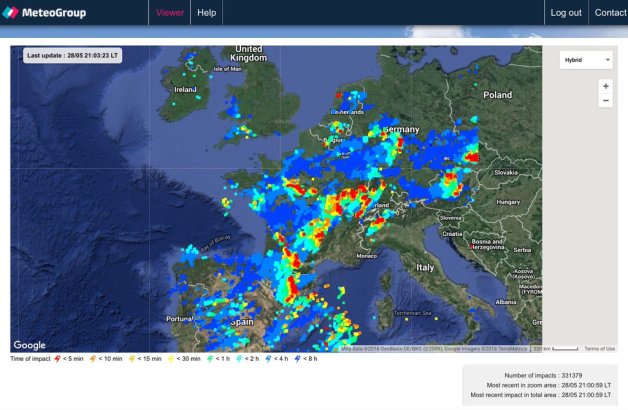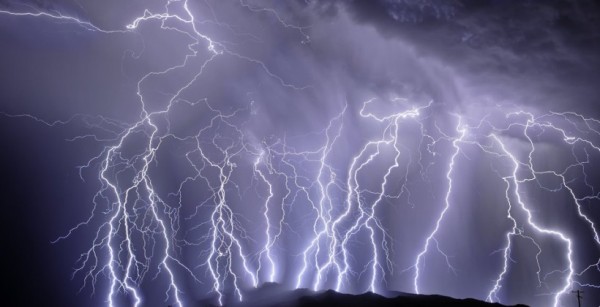Fire in the Sky — More Than 330,000 Lightning Strikes Hit Europe in Just Eight Hours
“Whatever happened to normal weather? Earth has always experienced epic storms, debilitating drought, and biblical floods. But lately it seems the treadmill of disruptive weather has been set to fast-forward.”
*****
28
May, 2016
A
cold, unstable air mass aloft. A record atmospheric moisture load due
to human-caused climate change. Add in 80 degree or warmer surface
temperatures and these three ingredients can spark some seriously
epic thunderstorms. Such was the case across Europe today as towering
thunderheads exploded into the skies, raining more than 330,000 bolts
of lightning down upon the continent.
(Extreme
lightning strikes in excess of 330,000 impacts were recorded over the
course of 8 hours on Friday. The strikes resulted in numerous extreme
weather related casualty events across Europe. Image source: Simon
Cardy.)
The
blasts of nature’s fury hammered a wide region stretching from
Portugal through France and the UK, into the Alps, Italy, Germany and
Denmark and on through Southwestern Poland. A rash that has injured
dozens across Europe resulting in at least one death.
In
Poland, a
mountain hiker lost his life to one strike.
Three more people were injured by lightning in the same region. A
nearby flash flood related to the storms also resulted in a drowning.
In
Germany, a bolt from the blue sky — likely coming from a towering
storm in the area — injured 30 people at a soccer field. Three
were listed as seriously injured including
the referee who had to be revived in the helicopter en-route to the
hospital.
In
Paris, 8 children and 3 adults were struck by lightning in
the midst of a birthday celebration at a park in northwest Paris. As
the thunderstorm rolled in, children sheltered under a nearby tree
whose higher branches attracted a lightning strike.
According to a
report from The
Guardian,
one child from this group remained in serious condition.
Conditions
in Context — Global Warming Expected to Increase Lightning Strikes
A
widespread storm outbreak of this kind generating such a high number
of lightning strikes and related casualties in a single day is not a
normal event for the European Continent. That said, this type of
event is likely to become more frequent due to a greenhouse gas
related warming of our world.
(Lightning
strikes are expected to increase as a result of global
warming according
to a 2014 study in Science.)
Added
atmospheric moisture content — which increases by about 7 to 8
percent per degree Celsius of global temperature rise — generates
more storm clouds with higher tops. These clouds, in turn, produce an
increase in the number of overall lightning strikes. According to a
Science study published during 2014, lightning
strikes are expected to increase by 50 percent in the United States
alone due to the human-forced warming of our world. Europe, which
sits between numerous unstable air masses — the Arctic Ocean air
mass to the north, the Greenland air mass to the northwest, and the
rapidly changing North Atlantic air mass — is likely to see ramping
climate instability even as overall atmospheric moisture levels and
storm-generating potentials increase.
Links:
Hat
tip to Spike
Hat
tip to DT Lange





No comments:
Post a Comment
Note: only a member of this blog may post a comment.